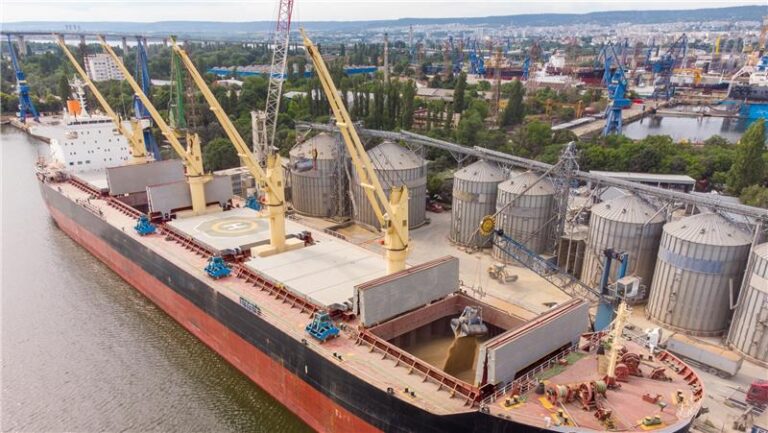Key Agricultural Policy Issues for 2020 Election
What issues matter most this year for American farmers and where does each administration stand?
Nearly 70 percent of Americans believe the 2020 presidential election will be the most important election in their lifetime, according to a recent poll. This year’s election is shaping up to be one of the most historic elections in U.S. history and agriculture is central to many key issues.
While COVID-19 has exposed the challenges American farmers and ranchers face on a day-to-day basis, it has also created a bipartisan divide on how to overcome these obstacles. Although the critical role of U.S. agriculture goes beyond political tensions, it is important to understand the stances of each administration when it comes to these issues that directly impact American farmers and ranchers.
In this article, we will provide a brief overview of five key policy issues for U.S. agriculture along with the similar and differing priorities of each administration.
Five Important Topics for U.S. Agriculture
This year marks a presidential election filled with tension on either side, with both parties disagreeing on a host of policy issues. However, one key issue that both parties can agree upon is the importance of a sustainable future for U.S. agriculture. The way to achieve this goal is a topic under heavy debate on both sides with both similar and vastly opposing viewpoints. Key agricultural policy issues up for debate in the 2020 presidential election include:
- Global Trade;
- Tax Policy;
- Regulatory Reform;
- Farm Labor Policy Reform; and
- Rural Infrastructure Development.
1. Global Trade
Bipartisan Differences
The Trump administration has taken a protectionist stance on global trade, using tariffs as a trade tactic that has led to the renegotiation of new agreements with Mexico, Canada, South Korea, Japan, and China. Phase One of the U.S.-China trade agreement has been one of the most notable for U.S. agriculture, as it promised more than $36 billion in U.S. ag purchases from China in 2020 alone. However, COVID-19 has made following through with this agreement even more challenging, as U.S. ag exports to China were estimated at 30 percent of the total goal by the end of August. While the current trade deficit between the U.S. and China totals $193 billion so far in 2020, the deficit has shrunk nearly 45 percent when compared to the 2019 deficit of $345 billion.
The Biden administration aims to take a more multilateral approach to the issue of global trade by rekindling relationships with the World Trade Organization and European Union while emphasizing the importance of ally relations in a healthy global trade economy. This administration walks a fine line between supporting free global trade and ensuring the needs of the American economy are being met.
Bipartisan Similarities
When it’s cut down to the core, both administrations essentially hold similar ideals with differing approaches. Both understand how imperative global trade is to the American agricultural community and have expressed support for the newly implemented USMCA. Both encourage domestic production and want to limit the outsourcing of American jobs. One side believes we must stand up against unfair trading practices—even if that means taking an initial hit in terms of retaliatory tariffs—to achieve a better future. The other side believes collaboration is the answer, in order to improve the market environment and reduce the need for federal assistance.
2. Tax Policy
Bipartisan Differences
The Trump administration is heavily focused on tax cuts and supports the reduction of capital gains tax, payroll tax, and death tax—all of which can potentially overburden American farm operations who have already incurred substantial profit loss due to recent events.
The Biden administration aims to implement a permanent tax code that will create more stability and invest in rural community development. This administration also announced they plan to raise corporate taxes to 28 percent in hopes of leveling the playing field between small and large agribusinesses.
Bipartisan Similarities
Both administrations plan to utilize tax policy to discourage the use of offshore production and increase food and agricultural production job opportunities within our borders. The Trump administration hopes to accomplish this by giving tax credits to companies who bring jobs back from China. The Biden administration plans to abolish incentives that encourage outsourcing and limit access to tax havens for corporate companies.
3. Environmental Sustainability and Regulatory Reform
Bipartisan Differences
The Trump administration considers deregulation to be a cornerstone of its economic plan. It takes a two-to-one approach when it comes to regulatory reform, meaning one new regulation during this administration would also include the removal of two existing regulations. This administration views many current regulatory structures to be “unnecessary red tape” that limits farmers’ ability to do their job. This push for deregulation is evident in the replacement of the Navigable Waters Protection Rule with Waters of the United States (WOTUS)—a new rule that aims to more clearly define what is considered “navigable water” and pull back regulations on certain bodies of water, including ditches and temporary ponds.
The Biden administration reiterates the importance of listening to both sound science and the voices of those potentially impacted when reforming existing regulations. The administration prioritizes the development of clean energy and rural land conservation. It has repeatedly echoed support for financial incentives for regenerative agricultural practices, such as opening carbon markets to farmers to encourage carbon sequestration practices. This administration has vocalized the importance of having an open dialogue to ensure water quality is protected without needlessly restricting agricultural operations.
Bipartisan Similarities
While the Trump administration takes more of a voluntary approach, both administrations have expressed an invested interest in creating a more sustainable future for U.S. agriculture while reducing its carbon emissions. Of all agricultural policy issues, this one seems to represent the most varied set of views between both administrations.
4. Farm Labor Policy Reform
Bipartisan Differences
The Trump administration is focused on streamlining the current H-2A immigrant worker program and has implemented more in-depth online systems to make the process easier for farmers and ranchers. Border control remains a top priority during this administration as they continue to work towards developing a system that both works for the American economy while limiting illegal immigration.
The Biden administration emphasizes the importance of immigrant labor to U.S. agriculture and supports a fast-track system towards American citizenship for these workers. This administration believes COVID-19 has highlighted the essential role of farm labor and promotes improved living conditions, overtime pay, and proper health safety protections.
Bipartisan Similarities
Both administrations acknowledge the existing farm labor system is flawed and in need of restoration so farmers have access to the labor needed for planting and harvesting seasons. The Biden administration hopes to improve worker benefits for farm labor to encourage a wider pool of options for farmers, while the Trump administration is focused on enhancing the H-2A program, in turn, making it easier for farmers to apply.
5. Rural Infrastructure and Community Development
Bipartisan Differences
The Trump administration has allocated a substantial amount of funding towards improvements to rural infrastructure and broadband connectivity over the last four years. A large portion of USDA funding from the CARES Act has gone towards improving electric infrastructure and installing smart grid technology in rural communities.
Using the “Build Back Better” slogan, the Biden Administration has introduced plans to improve agricultural productivity through the implementation of new technologies, techniques, and equipment. Its proposal includes a $20 billion investment in rural broadband infrastructure as well as the expansion of rural healthcare facilities through the Save Rural Hospitals Act. This administration also plans to take initiative in reducing the consolidation of the agricultural industry through strengthening antitrust enforcement along with federal programs to assist socially disadvantaged farmers.
Bipartisan Similarities
While both administrations have polar opposite stances on many policy issues that are important to U.S. agriculture, one issue they seem to agree on the most is the community and technological development of rural America. The events of 2020 have made the importance of rural broadband development a key issue not just in agriculture, but in American society as a whole. For our nation’s farmers and ranchers to continue feeding a growing population, they must have reliable access to broadband technology.
The Bottom Line: The Trump administration prioritizes the importance of fair trade and voluntary conservation programs, while the Biden administration promotes a commitment to rebuilding the middle class and helping farmers achieve net-zero emissions. Among their differing political viewpoints and proposals, both administrations seem to recognize the importance of ensuring our American farmers and ranchers have access to the tools and infrastructure needed to sustain our nation and the world.
The Growth of Agricultural Awareness in America
If there is any good that can be found from the tumultuous year that is 2020, the value of U.S. agriculture is irrefutable. More than a bipartisan issue, the future success of U.S. agriculture is a human issue of vital importance for each and every one of us no matter our political affiliation. Whether you’re a Democrat, Republican, or somewhere in between, you have to eat. Our farmers and ranchers are showing up every day to ensure that food gets to our table no matter what.
As advocates for these unsung heroes, AgAmerica Lending stays committed to sharing the stories of American farmers across the country and providing the financial support needed to get the job done. In the end, their success is our success.
Visit AgAmerica’s agricultural resource page if you would like to learn more about important updates regarding the state of U.S. agriculture. If you are a farmer, rancher, or rural landowner interested in partnering with a lender who is motivated to support you through challenging times and is invested in your long-term success, contact one of our lending experts today.











